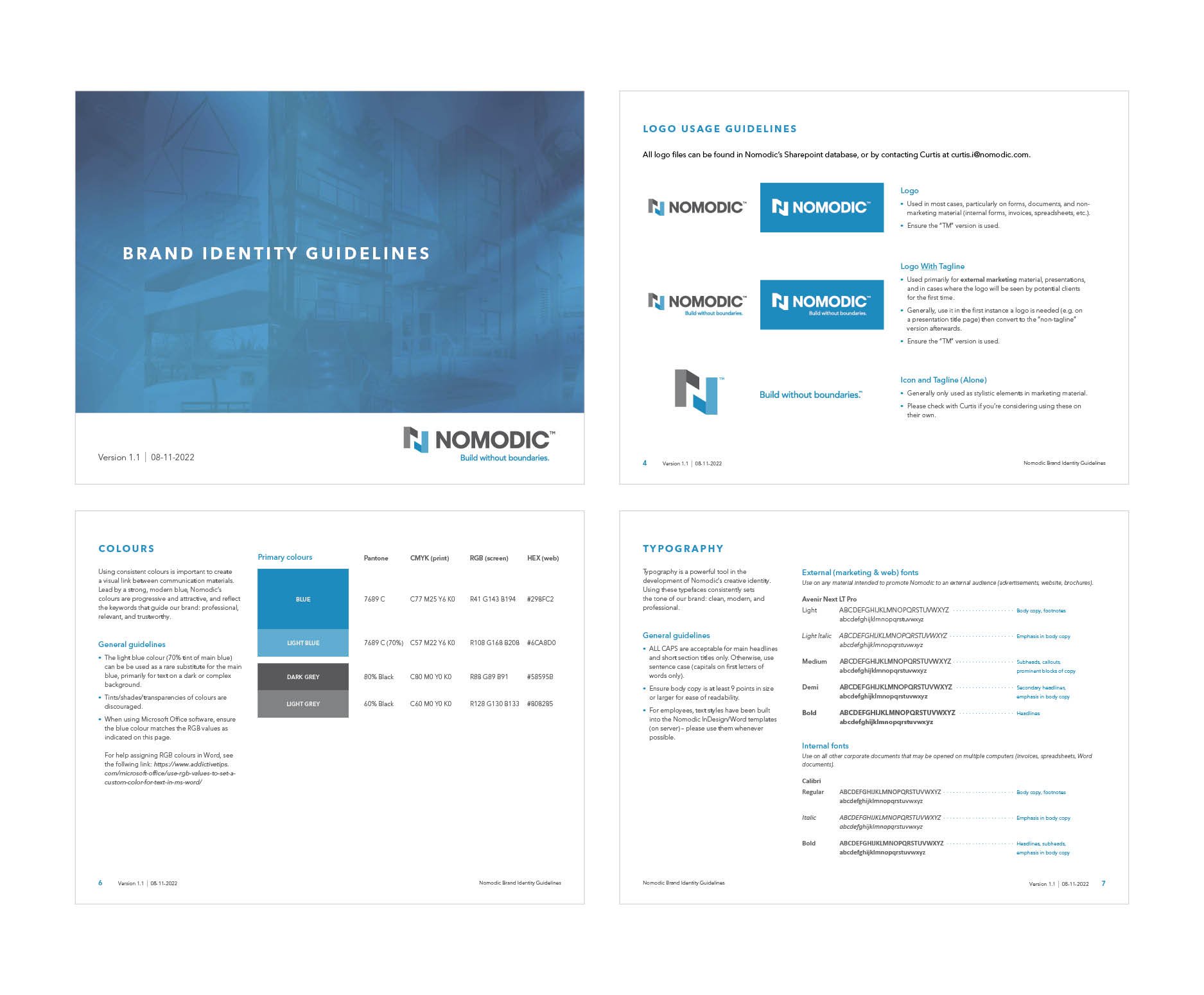Five Ways Design Makes Businesses Successful
/Last month I was at a conference speaking with an entrepreneur who owns a consulting business. We got on the topic of his website, which he had created himself years ago using an outdated website builder. He hinted that he knew his website wasn’t as attractive and effective as his competitors’, but he didn’t seem to mind.
“I have enough business coming in right now through word of mouth—why would I need a new site?” he shrugged.
His opinion got me thinking: Why should businesses and entrepreneurs—even those who have enough business coming in in the short term—care about having an attractive website and brand? How can good design help businesses be successful? Below were the first ideas that came to mind:
1. Design gives your audience a positive first impression.
Imagine having to choose between two companies offering similar services: one has invested in an attractive logo and branding, while the other quickly slapped together a logo using clip art in Microsoft Word. Based on first impressions alone, which company would you be more likely to contact?
If a potential customer sees a business has put little time into developing a solid brand and well-designed documentation, they may believe the company will have a similar lack of concern when it comes to customer service or their own products (even if that’s not necessarily true).
Your brand and design is your opportunity to make a positive first impression and show you are a business that places value in itself, its marketing, and its operations. Everything from the colour of your logo to the messaging on your business card affects potential customers (often subconsciously). Like it or not, humans are swayed by visual cues and seek things they find attractive; this is your chance to pull customers in by creating a positive “gut feeling”.
2. Design builds customer recognition and loyalty.
From Apple to McDonald’s, the world’s most successful brands all have an uncanny ability to encourage repeat business from customers. They know that well-designed marketing material using consistent imagery and targeted messaging will keep their customers coming back for more (assuming their previous experiences with the brand were positive).
Once a positive association has been made between a brand and an experience, just the sight of a logo can be enough to conjure up positive feelings (in psychology this is called classical conditioning). It’s been said that just the sight of the Golden Arches can cause people to crave a burger—what reaction do you want from your audience when they see your brand/logo? Design has the power to shape that response.
3. Design helps communicate your message effectively.
A logo, fonts, and colours should make up just part of your overall branding and design strategy. It’s important to also identify your target audience and key messages. You want your audience to see these messages and act upon them, which is where design can make a difference:
An important headline can use knockout text (white text on a dark background) to stand out
Colour can be used to highlight important items, visually associate elements, and add visual appeal
Principles such as chunking (breaking down text into smaller, more easily digestable portions) can aid in readability and convince readers to continue reading (imagine if this blog post was one large block of text – my guess is you wouldn’t have made it this far)
Whether delivered through your website, a brochure, or a simple blog post, targeted messages utilizing good design principles can more easily attract new customers and motivate them to respond.
4. Design saves time.
Like many people, I often have a hard time concentrating on more than one thing at a time and don’t like getting pulled out of a task I’m focused on. So when it comes to my own brand, I don’t like to be stopping to question every design decision:
“How much space should I put underneath these headings?”
“What colours should I use on this document?”
“Which font should I use here?”
The solution, one that many large companies use (and something I recommend ALL companies use, regardless of size), is to invest up front in a solid brand coupled with a brand identity guide.
Brand Guidelines created for Nomodic Modular Structures, 2019
An identity guide is a concise document that lays out the “rules” for your brand—including colour combinations and values, fonts, and rules for using your logo among other items. Larger companies with many employees may even expand this guide to include style-related rules for grammar use, naming conventions, and more. This document can save an immense deal of time whenever a design decision must be made, and ensures your brand is consistent and recognizable regardless of how and where it is used.
Another time-saving tip? Templates. If you regularly create proposals in Microsoft Word or presentations in PowerPoint, for example, spending time up front to create “master templates” complete with styles (presets that allow you assign attributes to groups of text with the click of a button) can end up saving you hours of time (and fistfuls of hair).
5. Design increases profits.
Many new businesses and entrepreneurs don’t have the luxury of expendable income, and thus they’re looking to save money whenever possible. Once the “must haves” are taken care of—a business license, supplies, etc—it’s tempting to cut costs when it comes to design and branding. Business owners may decide to create a logo themselves, or outsource to a friend or family member who isn’t formally trained in design. The result is a logo and marketing material that looks amateurish—and unfortunately if your visual communication looks amateurish, so will your business in general.
According to the UK-based Design Council, “Every £100 a design-led business invests in design repays £225 in increased sales.” That’s a whopping 125% return on investment.
Investing up front in a solid brand and visual communication has far-reaching long-term effects. Potential customers find your business more appealing, brand recognition increases, and the time needed to market new products and services is reduced. This inevitably results in increased business…and profits.
Of course, all of the above are interlinked; for example, creating a positive first impression will lead to increased recognition and loyalty, which will lead to increased profits. The bottom line is that being a design-conscious business can have far-reaching positive effects that lead to success.
Regardless of whether you’re starting a brand new business or, like the entrepreneur I met a few months ago, you have an existing business and currently have “enough” customers coming in, a solid and attractive brand, visual communication material, and website are more-than-worthy investments. Using the power of design, you will ensure you’re able to communicate more effectively with existing customers, and more easily reach new customers when needed.




